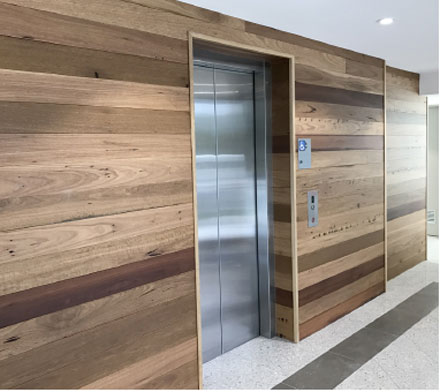
Boss Fire & Safety, has released a whitepaper Optimising fire resistance in timber for interior applications that discusses the importance of internal materials in terms of fire hazards and standards. Source: Timberbiz
Timber is conventionally thought of as a material best suited for use in structural applications or as external cladding. However, the recent popularity of the ‘Scandinavian’ (or ‘natural’) aesthetic has seen an increasing use of timber in decorative or architectural applications.
The most popular examples of this are the decorative use of cross-laminate timber (ClT), and the use of timber panels as wall or ceiling linings.
Before specifying timber for interior applications, a number of factors must be considered. Crucially, timber that is used as a wall or ceiling lining is subject to a number of fire-resistance standards which, while different to the standards for structural or exterior use, are just as stringent.
While fire performance for structural or exterior timber is oriented toward resistance to heat sources and preventing the spread of fire along the building envelope, fire performance for interior timber has a different focus.
Timber used as a wall or ceiling lining must limit the internal spread of fire and inhibit the production of smoke.
Performance in this regard is measured as a combination of three key indices: resistance to ignition, ability to limit or stop the spread of flames, and minimisation of smoke production.
In this whitepaper, Boss Fire & Safety explains the fire-resistance standards that must be satisfied before timber can be deemed suitable for interior application as a wall or ceiling lining. The company also discusses how timber can be optimised for maximum performance in this regard.
A copy of the whitepaper is available on their website www.bossfire.com.au





